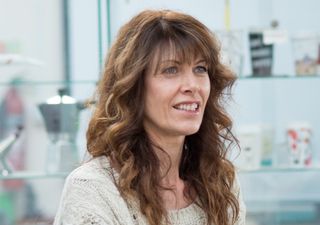5 alternative approaches to design thinking
Build your inward facing skills with these techniques and advice for good design thinking.

As a designer, senior teaching fellow and head of product design at the University of Sussex, I have a long history of educating and guiding designers to be more creative, inventive and to unleash the power of the mind and, using this experience, I have developed a range of unique approaches to design thinking.
Designing involves an inward and outward journey of awareness. My research is embodied design, which taps into the inward journey. It investigates learning and creativity through self-discovery techniques and designers can use these techniques to tap into the emotional experiences invoked by the design problem they are trying to solve.
Most designers are well versed in the outward facing approaches. But both journeys are fundamental to design thinking and can encourage a deeper comprehension and absorption of material. My work aims to encourage designers to build their inward facing skills and these are my top five inward facing considerations for design thinking.

01. Be mindful
Mindfulness is a huge buzzword. In practice, mindfulness techniques aim to help individuals focus on the issue at hand and reduce distraction. For designers, practicing mindfulness techniques can assist in bringing clarity to the design problem.
02. Be empathic
Empathic design is about walking in the emotional shoes of the people you are designing for. Integrating a scenario visualisation at this stage can combine unrelated concepts by tapping into information stored in the subconscious mind, this technique can allow designers to embody and experience the design problem as their target market and learn and appreciate the elements that influence the problem they are designing solutions for, such as culture, gender and age.
03. Use all your senses
Sense-ability is a holistic approach that encourages designers to use all of their senses – not just vision – when designing a solution. By concentrating on their emotional response to touch, taste, smell and hearing as well as their vision, it’s possible for designers to not only develop shape and form but also the branding of a product. It will enrich and enliven the way they design.
04. Be dramatic
Seriously. There’s a reason students are told to be a tree in drama school. We all know that. So why shouldn’t designers use this approach and become the lamp, or the board game, or the new scooter they are trying to design? I say, don’t be shy, give it a try.
05. Sit on the floor
It’s time for designers to get down with the kids. Literally. They should get on the floor when they draw just like they did when they were little. It helps them to relax, focus, block out distractions and get in the zone. If they are designing toys and games, it also helps to get into the minds of the people they are designing for. I may well be getting the toy designers at the Inventors Workshop to do this, when I present to them in September.
Diane Simpson-Little is speaking at the Inventors Workshop on 20 September at Whittlebury Hall, where she will explain in more detail her alternative approaches to design thinking. The Inventors Workshop helps toy and game designers break into the £3bn UK toy industry by giving them access to an affordable place to learn, network and pitch their ideas to big toy companies including Hasbro.

Thank you for reading 5 articles this month* Join now for unlimited access
Enjoy your first month for just £1 / $1 / €1
*Read 5 free articles per month without a subscription

Join now for unlimited access
Try first month for just £1 / $1 / €1
Get the Creative Bloq Newsletter
Daily design news, reviews, how-tos and more, as picked by the editors.
